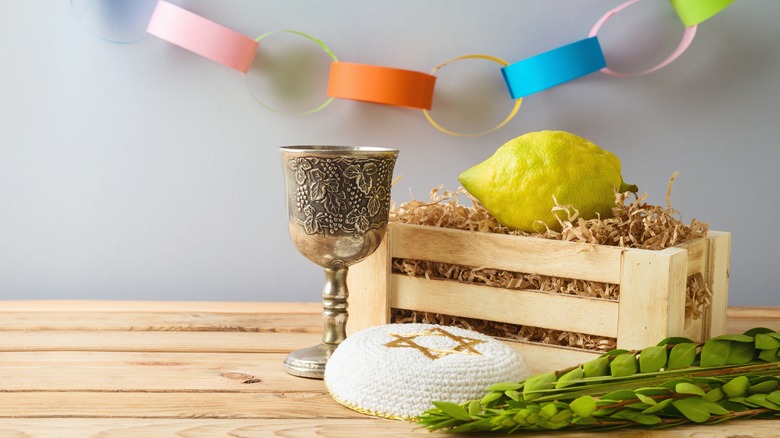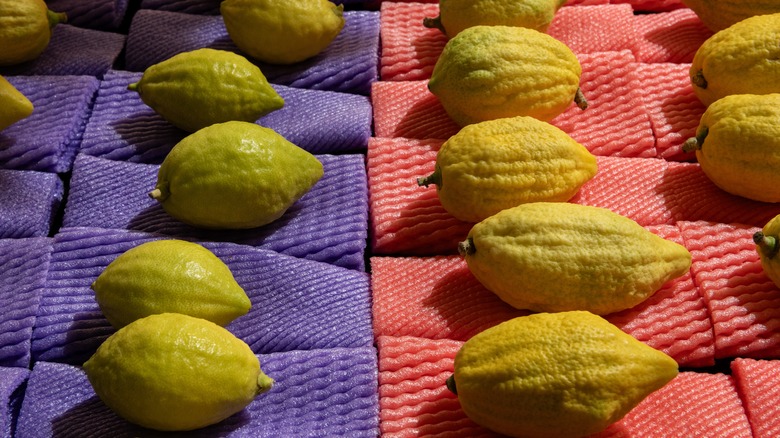How To Pick The Absolute Best Etrog For Your Sukkot Table
From organizing the ceremonies to building the sukkah, there are many moving parts to be accounted for while preparing for Sukkot. the weeklong harvest festival honoring the ancient Israelites' 40 years of wandering in the desert. One of the most important steps in preparing for this Jewish holiday is picking the best etrog, a fruit that is also referred to as citron, for the Sukkot table and ceremonies. Similar to how there is symbolism behind eating latkes on Hanukkah, etrogs also hold deep meaning in Sukkot ceremonies. Some rabbis say the etrog represents the heart, while others maintain that it represents good actions and wisdom. Either way, a beautiful etrog is a must-have for the holiday.
When picking an etrog, some people prefer that the citron has an indentation around the middle. Others will prioritize picking an etrog with a pitam, the knobby remnant of the fruit's flower on one end. Many celebrants work to find a remarkably symmetrical etrog with blemish-free skin that's beautiful enough to be used in Sukkot ceremonies. While examining prospective etrogs, the fruit should still be green; a green etrog can be turned yellow by leaving it with an apple for two days. In some households, the top third of the etrog is examined most thoroughly for unfavorable traits.
How etrog is grown can be important
A lot of work and dedication goes into producing etrogs with unblemished skin. This citrus grows from a tree which has sharp, serrated leaves that easily scratch and blemish the skin of nearby etrogs. One approach etrog farmers use is to tie back leaves so that they cannot brush against the fruit.
Exactly how an etrog tree is grown is taken into account when choosing the fruit for Sukkot. In some cases, etrogs harvested from a hybrid grafted tree are not considered usable for the occasion. For this reason, rabbis are sometimes asked to inspect a tree and certify the pedigree of the etrogs that come from it.
After Sukkot, some people will use the etrog to make jam or liqueur or use it in Sabbath prayers. Etrogs can also be made into juice, candles, and even skin cream. Perhaps etrogs could even be among the interesting foods that should be thrown into the dehydrator.

